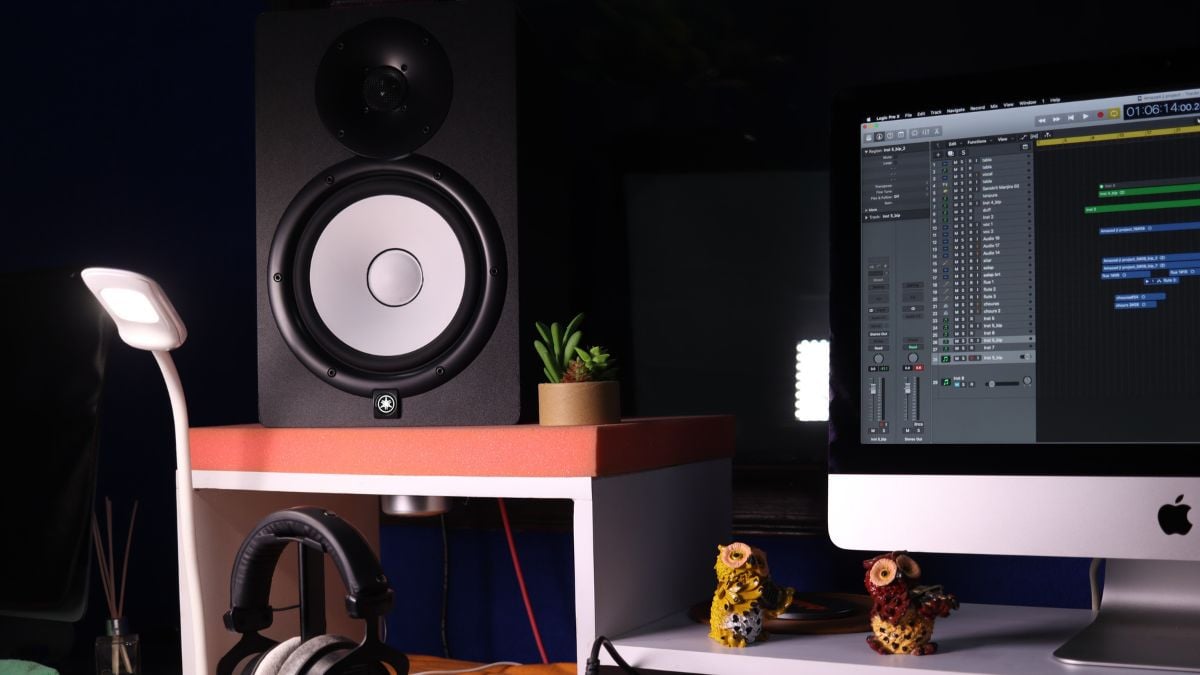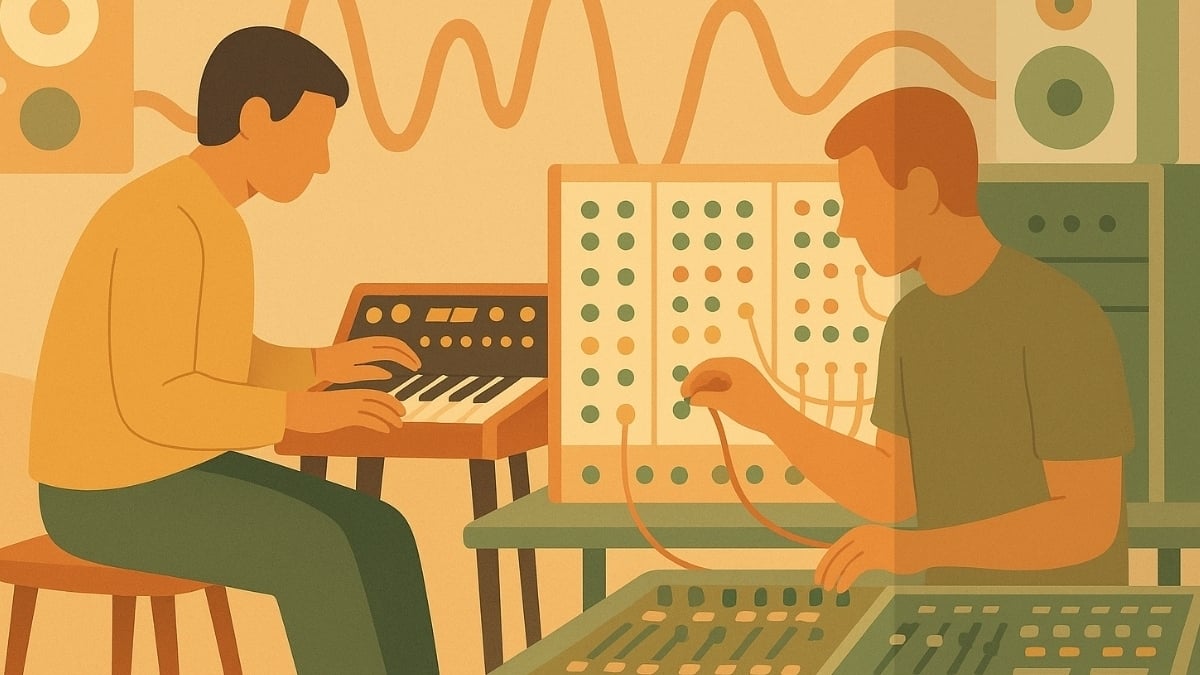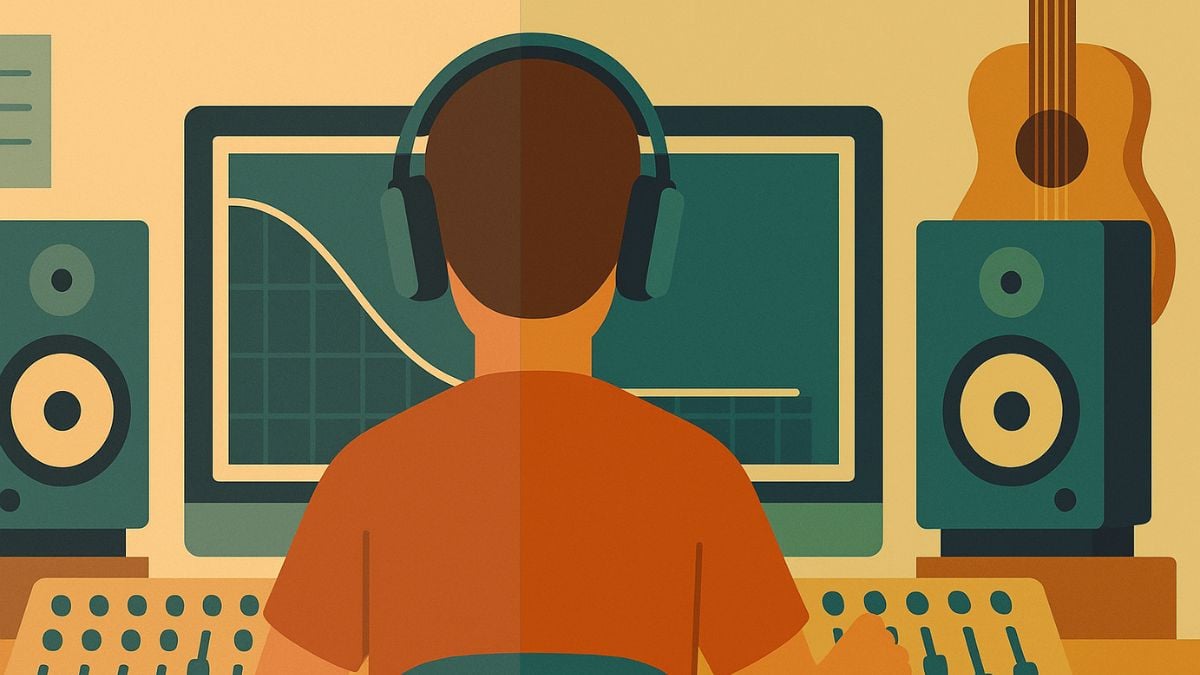Mixing in Mono: The Secret to a Masterful Mix

One of the simplest ways to generate clear, well-defined mixes is to mix in mono. Does the idea seem a little strange to you? You probably aren’t looking to recreate the sound of Elvis’s 1950s recordings, so why should you use this technique?
Well, it might surprise you to learn that mono-mixing is a vital part of the mixing process used by the vast majority of professionals.
To really understand what mixing in mono means, though, can be challenging. In this article, we will explore what it means to mix in mono and the benefits of this method.
What Is Mixing In Mono?
When mixing in mono, your audio is played at equal volume in each speaker. This essentially means that there is no panning. While mixing in mono, you won’t experience two separate channels of audio – you will experience one single channel in the center of the stereo field. This does not mean that your final mix will be in mono – it just means that for some of the time, while mixing, you will collapse your stereo two-channel mix into a single-channel mix.
Mixing In Mono vs. Mixing In Stereo
When we mix music in stereo, we use panning to separate different sound sources from each other. This is an important mixing component, but it can hide certain problems. Perhaps you have two instruments that clash on the frequency spectrum – a lead vocal and lead guitar for instance.
By panning the guitar out wide, you can give each of these mix elements their own space, and you may hear both of them quite clearly – as long as you are sitting in a perfect listening position in between the speakers. However, if you move to one side of your room, these elements might start to obscure each other again as the benefits of the panning are lost.
When we mix, we need to allow for the multitude of ways listeners will encounter our music. Sure – sometimes people will sit down and listen to your music on a perfectly aligned set of stereo speakers. However, most of the time, they will listen while doing something else, and they may even listen – sorry to break it to you – on phone or laptop speakers.
That’s right, your beautiful stereo mix will be played back out of systems with no stereo width at all! It’s important to get your mix sounding as good as possible on all systems, and by mixing in mono, we can prepare for that.
The Benefits Of Mixing In Mono
If you mix in mono, you are forced to EQ every element of your mix in a way that ensures perfect clarity. Without planning, all of your instruments will sit right on top of each other, and EQing becomes the most important method of carving out space for every element.
By mixing in mono, you also expose phase issues in the mix. Phasing is caused when sound waves come out of each speaker to interfere with one another. This interference can be either constructive or destructive and can lead to volumes being boosted or reduced.
Finally, you will also end up with an incredible-sounding middle channel. Once you’ve gotten the EQing right in your mono mix, the clarity of your middle channel should be impeccable when you expand the mix to stereo.
How To Mix In Mono
The first step when planning to mix in mono is to set your track levels and pans. It’s important to set the pan controls before you collapse the mix to mono, as the amount of panning will affect the level of elements in the mono mix. When switching from a stereo mix to a mono mix, elements that are panned centrally will seem louder than those panned out wide.
The rule to remember is that if you listen to a stereo mix in mono, central mix elements will sound approximately 3dB louder than those panned wide to the far left or right. Some DAWs can compensate for this, so find out about the software you are using.
Once the panning is set, you can add some basic EQ and compression if you wish, before then switching to mono mixing. There are different ways of switching into mono and the best method for you will depend on your DAW and your audio interface. In the following section we’ll give you a run-down of how to do this.
The next step is the most important and the most difficult! Without any planning to get you out of jail, you need to make every instrument in your mix sound clear and intelligible. There will be problems with masking in your mix; where the frequency range of one instrument overlaps with that of another. You should aim to reduce this so that each instrument ends up with its own place on the frequency spectrum. If you need more help with EQing, there are plenty of great resources out there that can help you.
When you are happy with the EQ settings, it’s time to correct any phase issues. As we’ve already mentioned, audio can suffer from phasing which leads to certain frequencies being louder or quieter than they should be – in certain cases audio may even suffer from comb filtering, where the problem exists across the entire frequency spectrum.
Phasing can often be caused by microphones being set up incorrectly; the signal from one mic phases with that from another due to the relative distances of the two from the sound source being recorded. If you can’t hear phase issues yourself you can use a plugin such as Logic Pro’s correlation meter to detect it. If your DAW doesn’t have one of these, a great free plugin that will do the job is Voxengo’s Correlometer.
If there are phase issues present, you can try to fix them by inverting the phase of one of the channels. If that doesn’t do the trick, then try adding a very short delay to one of the channels to prevent the phasing from occurring. There are free plugins that can help with this too – for example Forward Audio’s faSampleDelay.
With your EQ and phase issues taken care of, flip back into stereo and check the mix. Perhaps things will need adjusting, but you should hear a beautiful clear mix. It’s now time to continue mixing – add additional effects, automation etc. However, remember to keep switching back into mono to check the mix. This is to ensure that things don’t get cluttered as the mix becomes more dense with effects.
How To Check Your Mix In Mono
It’s important to be able to quickly switch back and forth between a mono and a stereo mix in order to check changes that you make. You’ll therefore need to figure out the easiest way that you can do this on your particular setup. Many audio interfaces actually have a mono button; you can simply press it and your stereo mix will instantly be collapsed to mono.
If your interface doesn’t provide you with this option, it is entirely possible that your DAW has the capability built into it. On your master channel look for a ‘channel mode’ button that allows you to switch between mono and stereo. If your DAW does not come equipped with this functionality, you don’t have to worry as you can download the free HOFA 4U Meter, Fader & MS-Pan plugin. Insert the plugin on your master channel, and simply press the ‘mono’ button to enable mono mixing.
Mixing in mono is one of those techniques that really separates amateurs from professionals. It’s a fantastic way of leveling up your mixes immediately, and once you’ve started mixing this way, you won’t want to sign off a mix until you’ve checked it in mono!



Comments:
Sep 04
Apr 18
Apr 03
Login to comment on this post